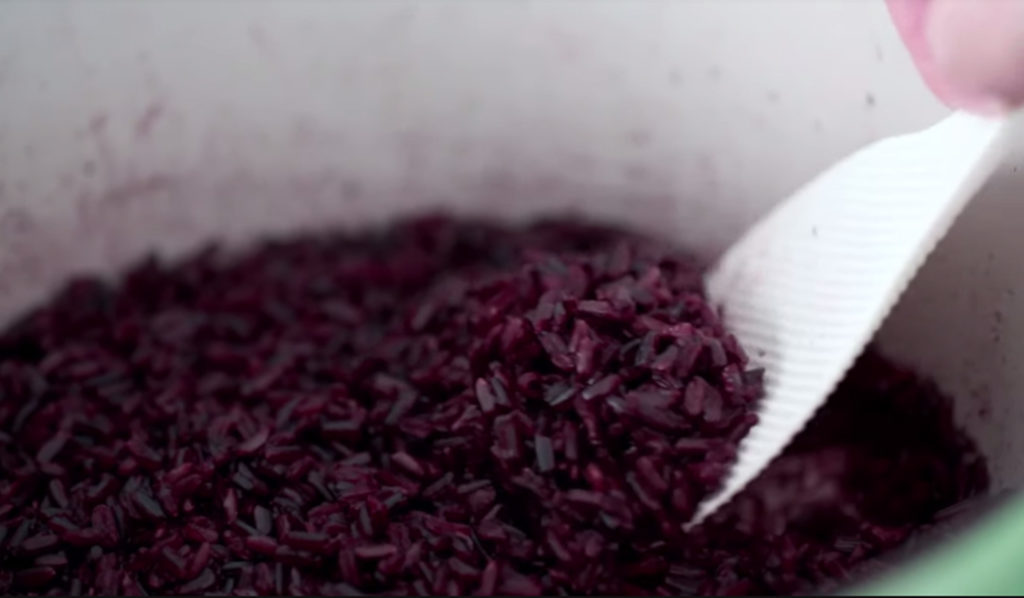Recently, bloggers from around the world embarked on a #ThinkRiceThinkThailand tour, getting special behind-the-scenes access to what Thai rice is all about. From getting knee-deep into rice planting and milling, ending with traditional Khan Toke dinner, bloggers and food influencers Kevin Curry, Mike Xing Chen, Bee from Rasa Malaysia, and Marc Matsumoto all had something to share on their journey in Bangkok and Chiang Mai.
FYI — Khan Toke is a northern Thai food tray, regarded as a personal standalone dining table, that originated from the Lanna tribe and is commonly found in Chiang Mai today. On the tray, a rice bowl is paired with multiple northern hors d’oeuvres such as chili dip, pork crackling, curry, and fresh greens. This is just one of many things on this trip to be envious of these bloggers for.
Getting back on the rice trail, we’ve managed to capture the educational takeaways of the aforementioned bloggers, and we tell you how to put this knowledge to practical use when you select your next carb source for your next meal.
Marc Matsumoto’s takeaway: ‘What is Riceberry Rice?’
The food influencer-consultant and chef from the US revealed that Riceberry rice is a hybrid breed of two types of Thai rice. It’s the result of a scientific crossover between Hom Nil rice (black jasmine rice) and Khao Dok Mali #105 (another type of jasmine rice), which incidentally is richer in nutrients than regular white jasmine rice, along with a list of other welcoming characteristics:
- Rice bran and germ have not been milled off — thus, it contains more fiber than its white counterparts.
- Richer in nutrients, similar to its sibling breed of brown rice but cooks as easily as white rice.
- Riceberry rice contains a high concentration of vitamin E, B1, iron, and omega 3 — higher than that of other rice types.
- Riceberry rice contains nutrients called anthocyanin, which gives the rice a dark purple appearance, and flavonoids which introduce healthy antioxidants to our diet.

Bee Ying Low from Rasa Malaysia ran the numbers on how many types of rice are out on the open field
The California-based food influencer and cookbook author, Bee, was told on her #ThinkRiceThinkThailand trip, arranged by the Department of Foreign Trade (DFT), that there are a variety of rice types we could consume:
- 12 types of white rice — with jasmine rice being the most widely-consumed in Thailand.
- 6 types of cargo rice — a type of non-glutinous rice which has similar qualities to brown rice, which isn’t fully polished or as they say, ‘milled’.
- 3 types of white glutinous rice — a prime example would be our treasured Khao Niaow which remains a food staple in the isaan region.
9 types of parboiled rice — you might have guessed it, parboiled rice is partially boiled rice, which gives the rice its yellow-brown tinge.
Kevin Curry’s experience in Ban Phae village learning the rice way of life
Healthy food guru and self-made blogger Kevin Curry had a first-hand eye-opening experience in Lamphun, getting muddled in the rice paddies of Ban Phae Tonyangam. The village uses the Thai Lue approach to farming and cultivating rice which includes hand-plating, hand-reaping, and hand-milling Khao Kab and Khao Jee rice grains — all while completely donned in hill tribe clothing.

Additionally, the Ban Phae village is treated as part of the Sufficiency Economy village, a project of Thai development initiated by His Late Majesty King Bhumibol Adulyadej, which explains why its rich history of rice farming is carefully preserved.
Apart from learning about the village’s roots, Kevin joined the troupe in acquainting themselves with the top-to-bottom process of harvesting rice, from planting to hand-crushing the rice bran. On top of the rice harvesting, local home-style rice recipes were cooked for all guests prior to a performance of Thai Lue dance.
This experience isn’t exclusive to special circles of bloggers, as the Ban Phae village is open to visitors who have the time to travel up north to Lamphun and wish to learn about their rice way of life.
Related posts:






Reader Interactions